Laos is mobilized for harvest. The dry season is beginning.
From the North all the way to the South we are following the harvest of sticky rice. From the market display you can see the varieties of rice. Sticky rice is the major rice in Laos since it requires less water throughout it’s growing season.
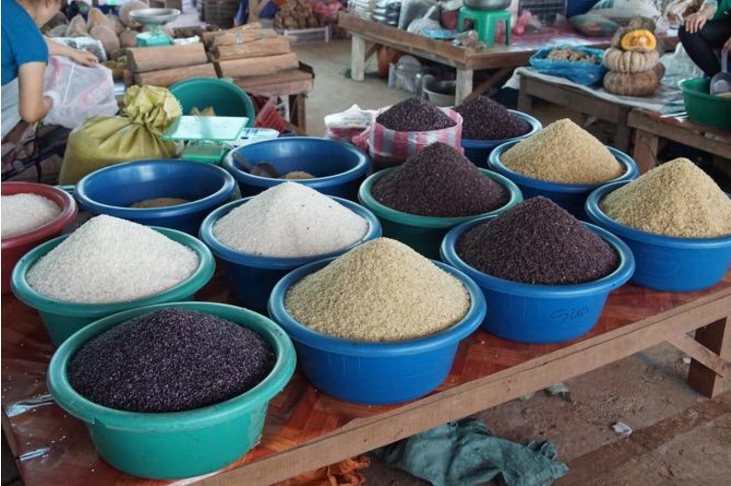
One day we walked on top of a narrow rock wall that divided sections of the rice paddies. On either side the surface was at least a foot lower. Some sections were still muddy whereas other sections had dried enough to cut the rice.
The plants look like this with the grains in a cluster at the top of the stalk.
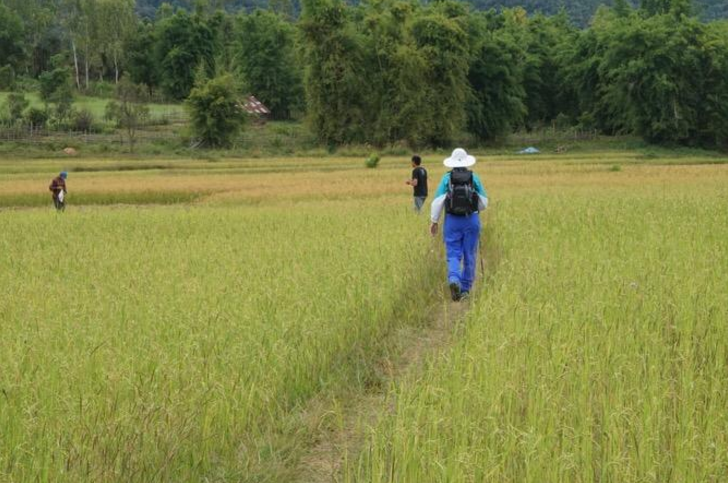
We watched the workers, sometimes eight or twelve moving in a line each armed with a short handled scythe. They grab a handful of rice, cut then tie in a bundle with a blade of rice then balance on the plant stub to dry. In a week or so, they return to gather it into a pile for thrashing.
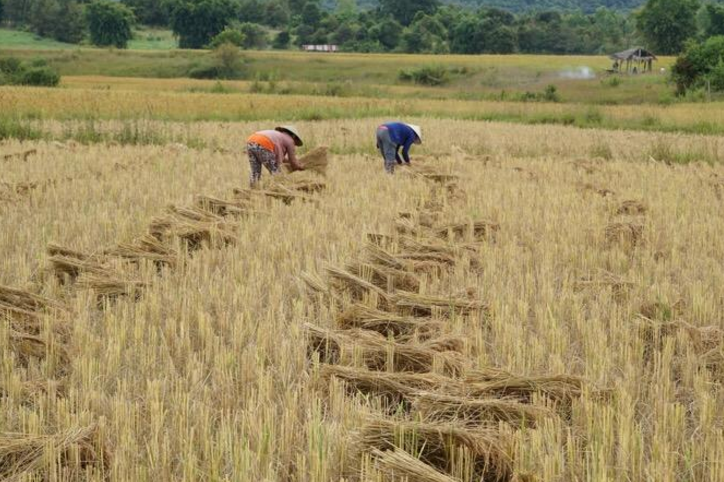
You can see the bagged rice kernels that now have to be transported to a rice mill where the husks are removed.
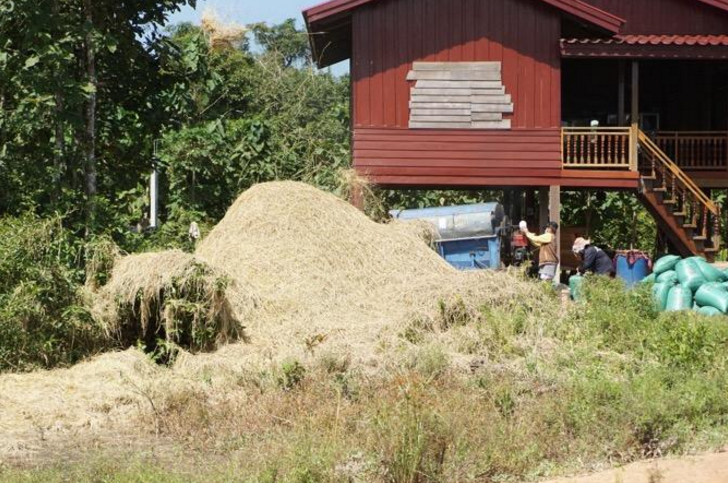
There is a hero in this story. It first appeared about six years ago and it is causing a real sea change in farming techniques. It may not look like much but this machine is used for everything in Laos. It pulls carts loaded with people, plows the fields, hauls bags of rice, everything the water buffalo used to do. Here it has special wheels to work in a muddy rice field but just as easy it can have rubber wheels.
It is a simple one piston, crank-start engine that effectively sent the water buffalo out to pasture. If people didn’t find the meat tasty, we might never see them again. Larry found the meat chewy. I passed on the experience.
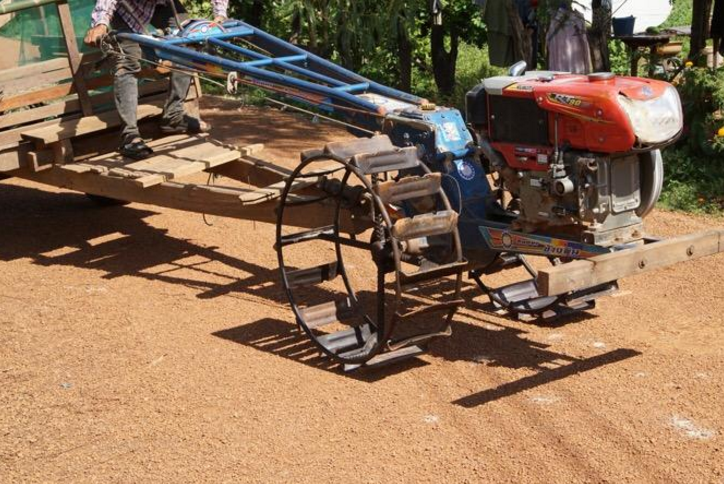
While a fully grown buffalo costs around $ 800 US dollars and the tractor could cost up to $2000 US dollars it doesn’t need time off to play in the water!
It is easy to overlook another crop which used to be popular here, opium poppies. In 2009 a lot of tribal people mainly Mon-Khmer were resettled as a means of stopping opium growth. Since Laos is 66% agricultural this represented ¼ of the people of Laos. They were given new farm land in an area they had no previous experience. Mountain people went to low lands and low landers went to mountainous areas. Drug addictions were dealt with more or less. We walked through two of these villages in our drive from Luang Prabang to Phonsavan. We saw few traditional arts but satellite dishes and blaring music, pigs, and chickens. English lessons were being held mostly using sentences referring to tourists.
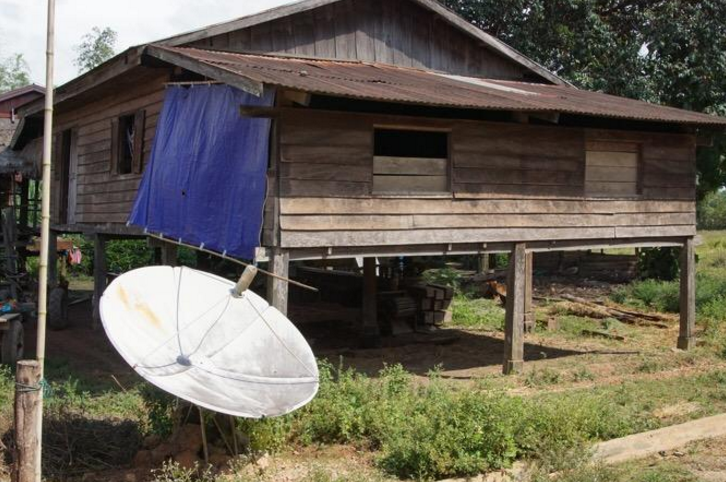
It is impossible for me to get a true sense of the success of the maneuvers on the people themselves but Laos has dramatically reduced production of opium leaving Myanmar the largest supplier in the region having 56,000 hectacres in production to Laos’s 5,500 hectacres.
Until later,
Shirley and Larry



